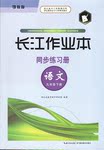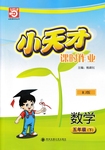题目内容
—The artist has got _____ much work to do that he hardly has time to help his wife with the
housework.
—That’s true. Even on Sundays he is busy with his work.
housework.
—That’s true. Even on Sundays he is busy with his work.
[ ]
A. too
B. so
C. very
D. such
B. so
C. very
D. such
B

练习册系列答案
 长江作业本同步练习册系列答案
长江作业本同步练习册系列答案 小天才课时作业系列答案
小天才课时作业系列答案 一课四练系列答案
一课四练系列答案
相关题目
 y-paid
(高薪的) job to become an artist that uses toys in
his art. He uses toy bricks to build everything from the Statue of Liberty(自由女神像) to Superman! He has more than 1.5 million colored
bricks in his working room in New York which he uses to make pieces of art. He
started by building small models but then decided to do something big and
created a self-portrait (自画像). It took him two days just to build the
eyes.
y-paid
(高薪的) job to become an artist that uses toys in
his art. He uses toy bricks to build everything from the Statue of Liberty(自由女神像) to Superman! He has more than 1.5 million colored
bricks in his working room in New York which he uses to make pieces of art. He
started by building small models but then decided to do something big and
created a self-portrait (自画像). It took him two days just to build the
eyes. ck"
has been very popular with museum visitors everywhere.
ck"
has been very popular with museum visitors everywhere.
